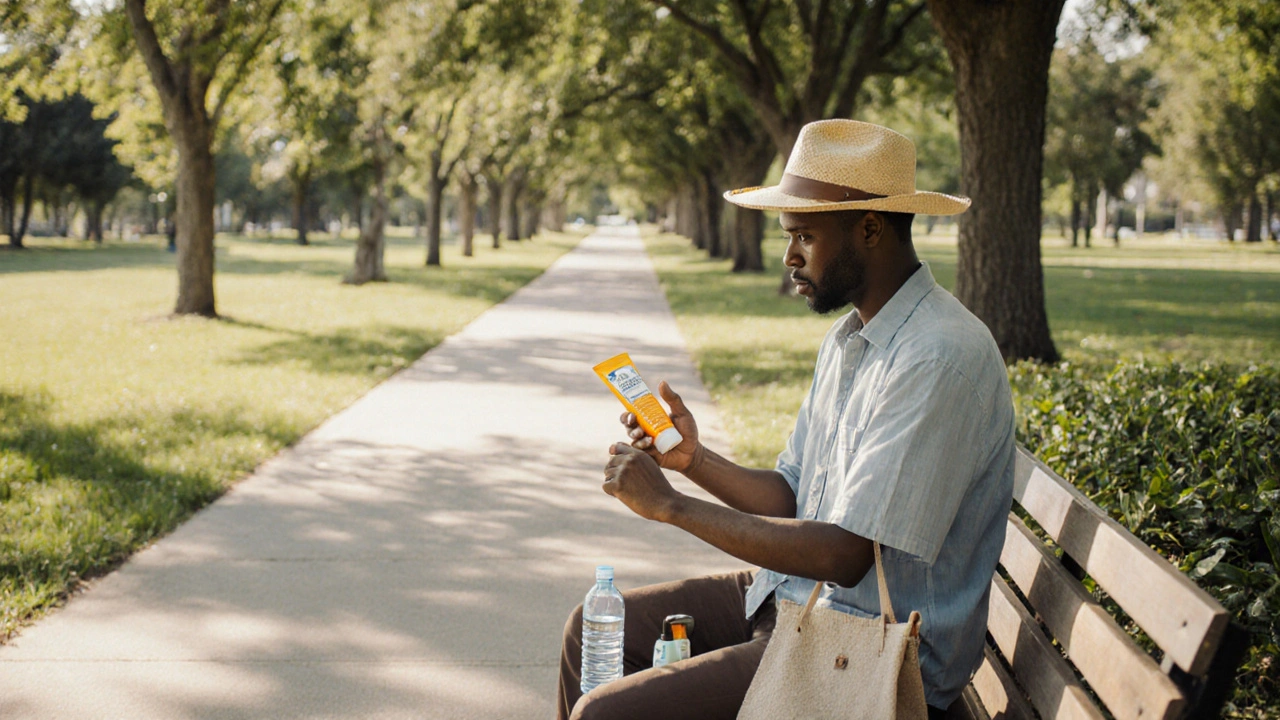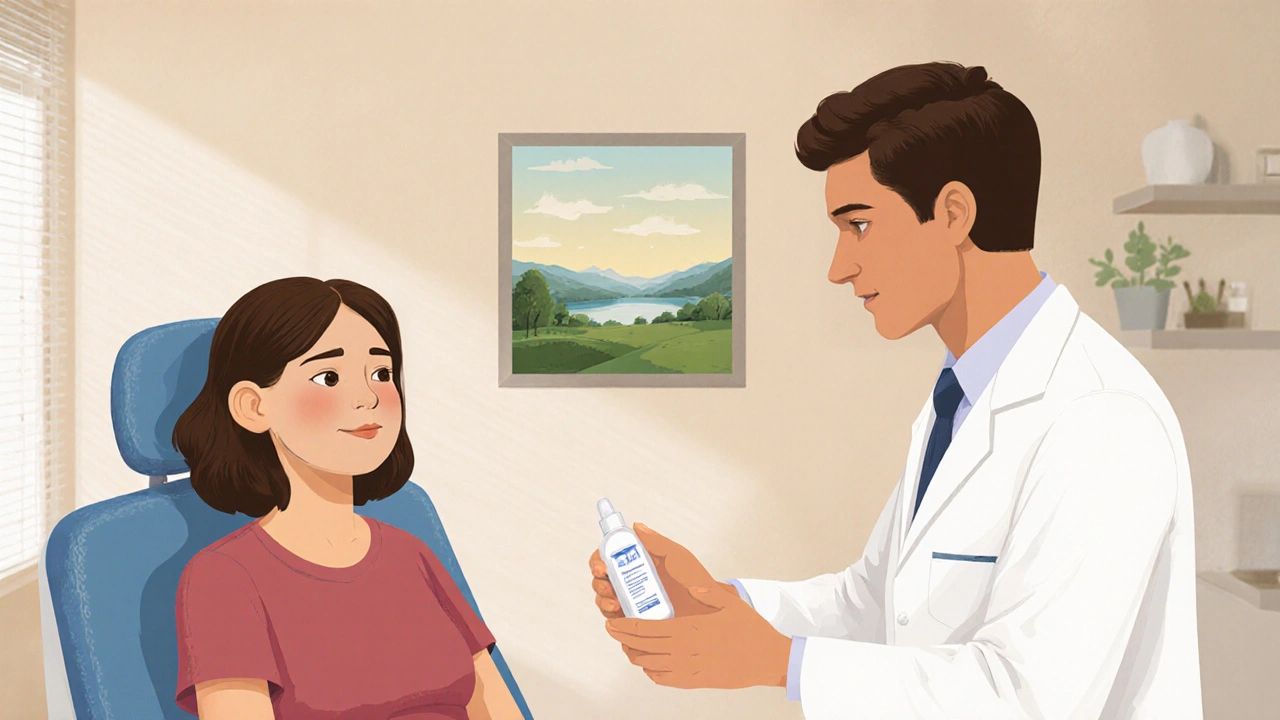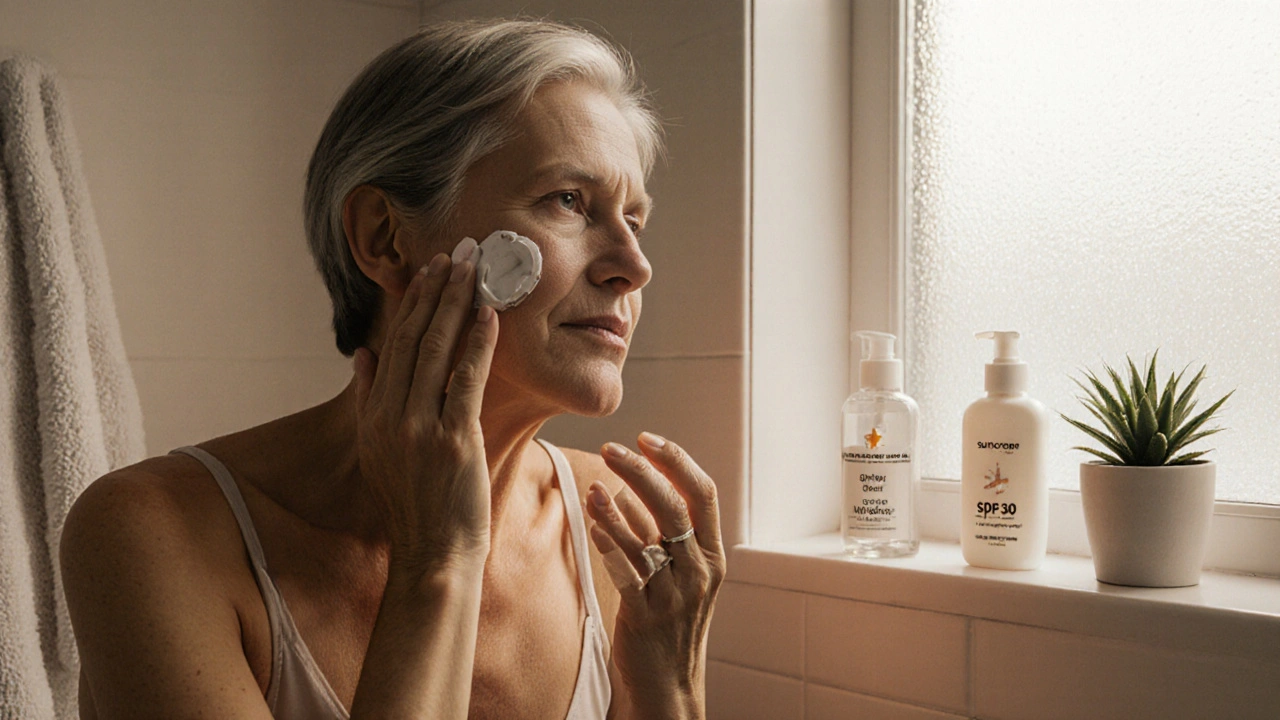When you’re battling Lymphoma, the focus is often on chemo, radiation, or immunotherapy-rightfully so. What many patients overlook is how those powerful treatments can turn skin into a sensitive, itchy, or painful canvas. This guide walks you through practical steps to keep your skin comfortable, healthy, and resilient while you undergo cancer therapy.
Key Takeaways
- Identify the skin side‑effects linked to each type of lymphoma treatment.
- Build a gentle daily routine that balances cleansing, moisturizing, and protection.
- Choose products that soothe without interfering with medical care.
- Know when a skin change signals a need for professional help.
- Practice sun safety even on cloudy days.
How Lymphoma Treatments Touch Your Skin
Each therapy talks to your skin in a different way. Chemotherapy attacks fast‑growing cells, which includes the skin’s outer layer. The result can be dryness, peeling, or a rash that feels like sunburn. Radiation therapy beams concentrate on a specific area, often causing redness, swelling, and a tight, leathery feeling called radiation dermatitis. Immunotherapy ramps up your immune system, sometimes leading to an over‑reactive skin response such as vitiligo‑like patches or itching.
These reactions aren’t just uncomfortable; they can become infection gateways if left unchecked. Understanding the pattern that belongs to your treatment helps you pick the right products and timing.
Daily Skincare Routine for Treatment Days
Think of your routine as a triad: cleanse, hydrate, protect. Keep it simple, avoid abrasive scrubs, and stay consistent.
- Gentle Cleansing: Use a fragrance‑free, sulfate‑free cleanser. Look for ingredients like glycerin or ceramides that won’t strip natural oils. Wash with lukewarm water-hot water busts the skin barrier, cold water can be too harsh for sensitive skin.
- Moisturizing: Apply a thick, hypoallergenic Moisturizer within three minutes of bathing to lock in moisture. Products containing hyaluronic acid, shea butter, or dimethicone are skin‑friendly and won’t clog pores.
- Protection: If you’re outside, slather on a broad‑spectrum Sunscreen with at least SPF30. Choose a mineral formula (zinc oxide or titanium dioxide) because it’s less likely to irritate compromised skin.
Repeat this routine twice a day, and add a light layer of moisturizer after each wash if you notice extra dryness.
Products to Choose-and Those to Skip
Here’s a quick cheat sheet. Focus on calm, barrier‑supporting ingredients. Avoid anything with alcohol, strong fragrance, retinoids, or alpha‑hydroxy acids until your skin stabilizes.
| Product Type | Key Benefits | Typical Ingredients | When to Use |
|---|---|---|---|
| Gentle Cleanser | Maintains pH, avoids stripping | Glycerin, ceramides, oat extract | Morning & night |
| Barrier Cream | d>Deep hydration, protects against friction d>Shea butter, dimethicone, panthenol d>Post‑bath, before dressing|||
| Mineral Sunscreen | d>Broad‑spectrum UV protection, non‑irritating d>Zinc oxide, titanium dioxide, vitamin E d>Outdoor exposure, daily if possible|||
| Topical Steroid Cream | d>Reduces inflammation, calms rash d>Hydrocortisone 1% (over‑the‑counter) or prescription strengths d>Only for localized flare‑ups under doctor guidance
Remember: your oncology team may have specific product recommendations based on the drugs you’re receiving. Always run new items past them.

Sun Safety Even When You’re Indoors
Radiation and chemo can make your skin photosensitive. That means UV rays can cause a burn faster than usual, and even indoor lighting can aggravate some conditions.
- Wear long‑sleeve, loose cotton shirts when you’re near windows.
- Apply sunscreen to exposed skin at least 15 minutes before stepping outside.
- Reapply every two hours, and after sweating or towel‑drying.
- If you’re undergoing total body irradiation, ask your clinic about protective dressings or cooling caps.
Managing Specific Skin Issues
Below are common problems and straightforward fixes.
Radiation Dermatitis
It starts as a mild pinkness and can progress to blistering. Keep the area clean with a mild cleanser, then layer a barrier cream. For painful areas, a prescription‑strength steroid (e.g., clobetasol) may be recommended by your Dermatology specialist.
Chemotherapy‑Induced Dryness
The skin loses its natural oils. Use a thick moisturizer at least twice daily, and consider an overnight occlusive mask (e.g., petroleum‑based ointments) for extra lock‑in. Drinking plenty of water helps, but it’s not a cure‑all-topical support does the heavy lifting.
Itchy Rashes from Immunotherapy
Antihistamines (like cetirizine) can quiet itching, but avoid scratching. Applying a cool compress for 10 minutes, followed by a fragrance‑free moisturizer, eases discomfort. If the rash spreads rapidly, contact your Oncology team-sometimes dose adjustments are needed.
When to Call Your Doctor
Skin issues are a signal, not a nuisance. Reach out if you notice any of the following:
- Rapid spreading redness or swelling.
- Open sores that won’t heal after a week.
- Painful blisters or severe peeling.
- Fever, chills, or oozing from a rash-possible infection.
Early intervention can prevent complications that might delay your cancer treatment.
Putting It All Together
Protecting your skin during lymphoma therapy is a blend of awareness, gentle habits, and teamwork with your medical providers. By cleaning smartly, moisturizing generously, shielding from the sun, and staying alert to changes, you give your skin the best chance to stay strong while your body fights the disease.
Think of your skin routine as a supportive sidekick-quiet, consistent, and always ready to back you up. With the right lymphoma skin care plan, you’ll navigate treatment with fewer discomforts and a brighter outlook.

Frequently Asked Questions
Can I use regular body lotion during chemotherapy?
Yes, if the lotion is fragrance‑free, hypoallergenic, and free of alcohol or retinoids. Look for ingredients like ceramides, glycerin, or shea butter that help rebuild the skin barrier.
Is it safe to wear makeup while undergoing radiation therapy?
Makeup can be used on unaffected areas, but avoid applying it directly over the radiation field. Choose mineral‑based products and remove them gently with a mild cleanser at the end of the day.
How often should I reapply sunscreen during treatment?
Reapply every two hours, and immediately after sweating, towel‑drying, or swimming. Even on cloudy days, UV rays can penetrate, so a consistent schedule is key.
What signs indicate a skin infection?
Look for increasing redness, warmth, swelling, pus, or a fever above 38°C (100.4°F). If any of these appear, contact your oncology or dermatology team right away.
Should I avoid hot showers during treatment?
Hot water can strip natural oils and worsen dryness. Opt for lukewarm water and limit shower time to 10-15 minutes.

9 Comments
This is exactly what I needed. Simple, clear, and no fluff. Just the facts that help.
Man, I wish I'd had this when I started chemo last year. I was using that fancy lavender body wash because it 'felt therapeutic'-big mistake. Skin felt like sandpaper by week two. This guide? Gold. The part about lukewarm showers and mineral sunscreen? Life-changing. I didn't realize how much damage hot water and chemical sunscreens were doing. Now I stick to ceramides, no fragrance, and I reapply sunscreen like it's my job. My oncologist even complimented my skin. Turns out, caring for your skin isn't vanity-it's strategy.
you know what no one talks about? how your skin just… gives up. like it’s tired of being your body’s first line of defense. i had this rash that looked like a sunburn but i hadn’t been outside. no one told me chemo could turn your skin into a betrayal. this post gets it. i’m not crying. i’m just… really tired.
While I appreciate the general advice, I must point out that the article fails to address the critical role of microbiome balance in dermatological resilience during immunotherapy. The over-reliance on barrier creams and mineral sunscreens is, frankly, outdated. Recent studies from the Mayo Clinic (2023) indicate that topical probiotics-specifically Lactobacillus reuteri-can significantly reduce immune-mediated dermatitis by modulating IL-17 pathways. Why is this not mentioned? Because the pharmaceutical-industrial complex prefers products that require repeated purchase, not solutions that restore homeostasis. Also: sunscreen should be zinc oxide only-titanium dioxide is a known endocrine disruptor when nano-sized. I’ve cited the sources. You’re welcome.
skin is the soul’s first language… when it screams, it’s not just dryness… it’s your spirit begging for mercy. i don’t moisturize to heal… i moisturize to remember i’m still here. 🌿
my dermatologist said to use petroleum jelly but i’m terrified it’ll trap toxins. what if it’s not helping… what if it’s making things worse? i’ve read things online… i think some ingredients in ‘hypoallergenic’ products are actually carcinogenic. i don’t sleep anymore.
Did you know that some hospitals are now using UV-blocking window film in patient rooms? It’s not widely advertised. My sister’s oncology ward installed it after three patients developed severe photosensitivity reactions. They didn’t even tell us until after. I’m not saying this guide is wrong-but I’m saying there’s a lot they don’t tell you.
Thank you for this!! 🙏 I’ve been using the ceramide cream you mentioned and my skin actually feels… soft? I didn’t think that was possible. Also, I started wearing cotton gloves to bed-no scratching! 😌
As someone who grew up in a household where skincare meant lye soap and cold water, I never imagined that gentle, deliberate care could be so profoundly healing. This guide reads like poetry written by a scientist who also knows how to hold a hand. Thank you for honoring the quiet dignity of skin-the body’s most overlooked organ. I’ve shared this with my book club. We’re all in different stages of treatment, but we’re all learning to listen to our skin again.
Write a comment